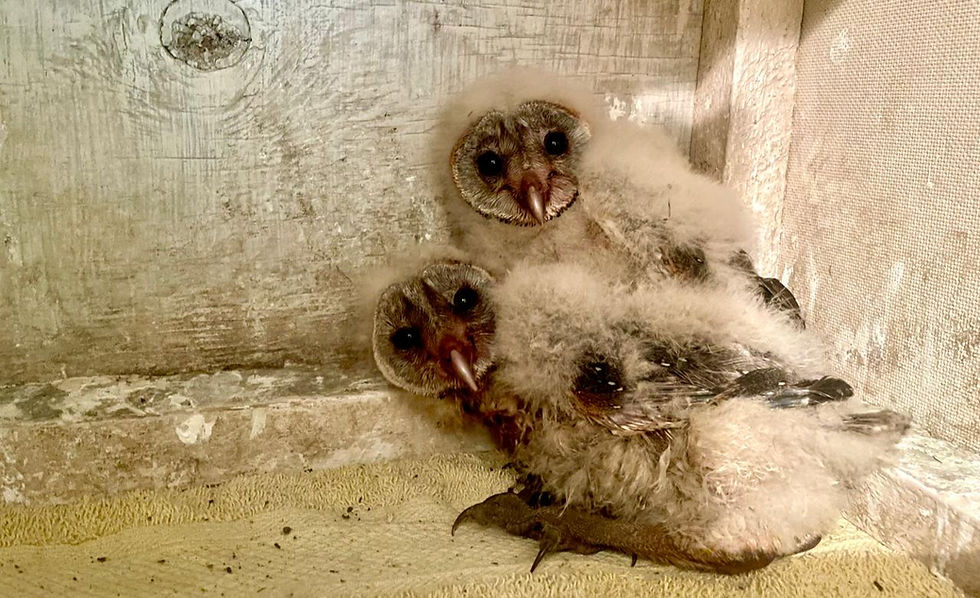Studying African Fish Eagles on Lake Naivasha
- Kenya Bird of Prey Trust

- Sep 30, 2021
- 4 min read
Guest blog by Pranav Peshavaria
The shores of Lake Naivasha in the Great Rift Valley are habitat to a plethora of bird life and one iconic African species in particular – the African Fish Eagle. This species has made the boat rides on Lake Naivasha just that much more fascinating.

Studied since the 1950s
Lake Naivasha has a history of having very dense fish eagle populations which fluctuate with the amount of suitable shoreline habitat, which in turn varies considerably with rising and falling lake levels. Leslie Brown was the first to study Fish Eagles at Lake Naivasha in the 1950s and 60s, where he managed to learn almost everything about the African Fish Eagle, from their behaviour to their breeding biology and feeding requirements which he published in his book The African Fish Eagle in 1980. Since Leslie Brown’s time, the Fish Eagles have been studied almost constantly and I was lucky enough to be able to contribute to this ongoing dataset.
The first time I heard about the large dataset that was already present on Fish Eagles, I was still in the early stages of choosing a topic for my final year dissertation for my Bsc. This involved going back and forth with a number of people who were already much more experienced in the conservation and ornithology fields and having long conversations just exchanging ideas. When I did some more reading around the African Fish Eagles, my interest grew and after a couple of months, I decided to take them on as my dissertation project.
Counting Fish Eagles
The project involved getting onto a boat at sunrise and moving around the lake, close to the lakeshore and counting and recording all the Fish Eagles seen. A full count of the lake usually takes two days and has got to be one of my best experiences yet, as the wealth of knowledge there is to gain from this is phenomenal.

Dissertation project
Fish Eagles are incredibly fascinating birds. The eagles, as their name suggests, feed on fish (but still have a surprisingly varied diet) and in order to do this, they need to see the fish – so, as part of my study, there was other environmental data that I was required to collect such as water clarity and the treeline to shoreline length, which is an important determinant of whether a fish eagle would be present in an area. The data collected is also going to contribute to my final year undergraduate dissertation project where I will be looking at habitat preferences and population fluctuations of the Fish Eagles at Lake Naivasha.
This study would not have been possible without the guidance and experience of Shiv Kapila whose knowledge about the lake and the Fish Eagles proved to be invaluable. This project is a simplified version of what Shiv had done himself for a much longer period of time in 2009. I was fortunate enough to meet Shiv in Naivasha and do one of these fish eagle counts with him where he showed me how these counts are done. The count this year yielded the highest recorded number of individual Fish Eagles at Lake Naivasha, with over 330 individuals seen. This is largely attributed to the rise in water levels which has, in most areas, decreased the treeline to shoreline length allowing for fish eagles to access the lake more easily.
The Naivasha population
The Fish Eagle population at Lake Naivasha is quite interesting as it may well be the densest population of Fish Eagles in Africa, though this is subject to fluctuation and changes with rising and falling water levels. African Fish Eagle populations at Naivasha operate at a maximum carrying capacity most of the time – this means that they occupy all the available habitat (so long as it allows them to feed and nest) around the lake. And this has been quite evident as, when Shiv had done his counts in 2009, the lake level was the lowest it had been and there were 106 individuals recorded compared to the present total of 330 individuals.

There are still some unanswered questions with the African Fish Eagles which I believe will be unravelled in the near future, such as juvenile dispersal – a topic that depends on the availability of GPS tags to study. Studying the fish eagles in Naivasha was an amazing opportunity I had and I hope to return someday to continue studying them, they are incredible birds with incredibly fascinating lifestyles.
About Pranav Peshavaria
My name is Pranav Peshavaria, I was brought up in Nairobi and from a young age have always had a knack for wildlife, when I turned 13 and got my first bird book this passion grew exponentially and really sealed an interest in birds for me too. I would spend hours going through my bird book just fascinated at all the diversity we have in Kenya, and this really helped steer my career plan. Since then I have always wanted to study something related to wildlife and am now lucky enough to be studying wildlife conservation in university. One of my many ‘wildlife – related’ aspirations was to study birds in Kenya, and this was exactly what I got to do with the African fish eagles in Naivasha.
Wish to learn more, visit our website and join us on Facebook and Instagram.
Kenya Bird of Prey Trust
Understand - Protect - Restore






Comments